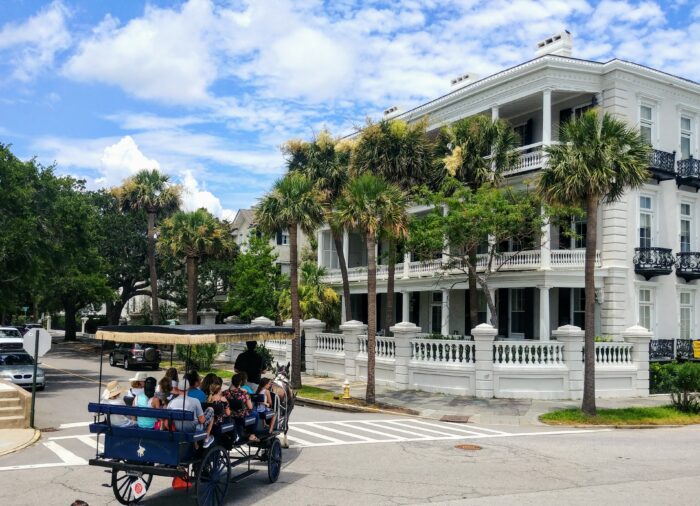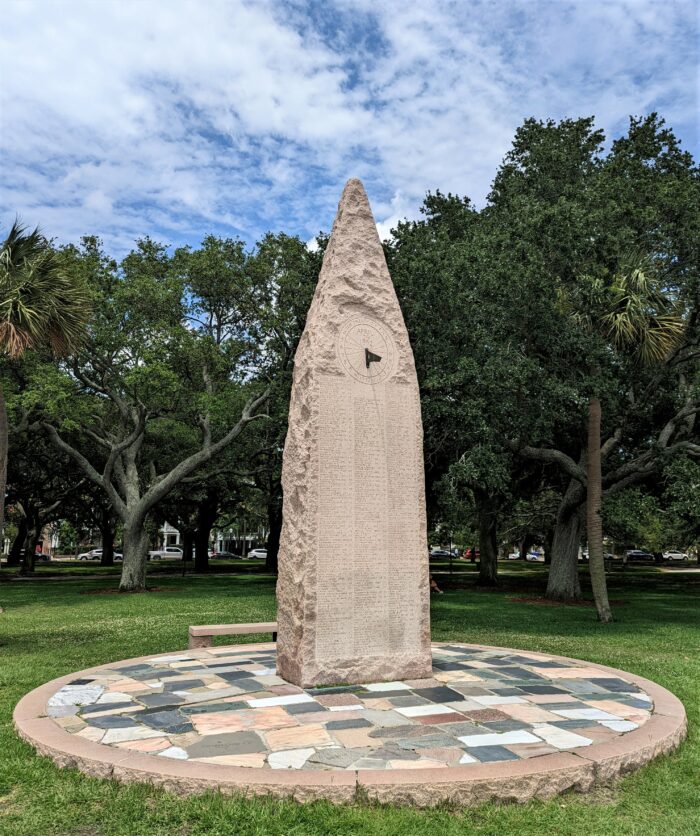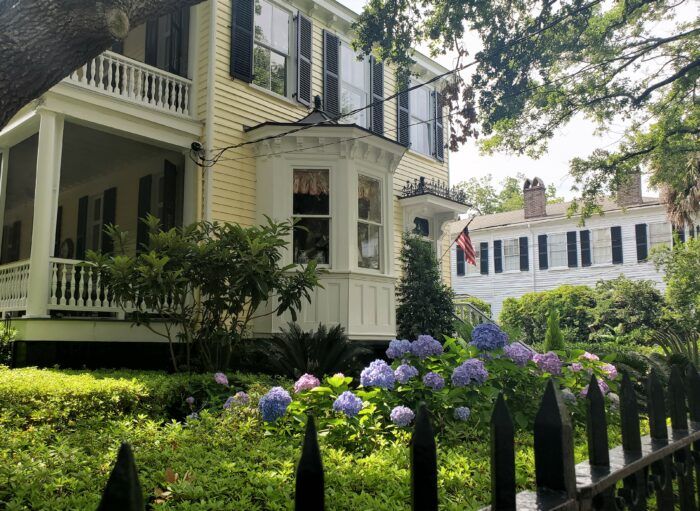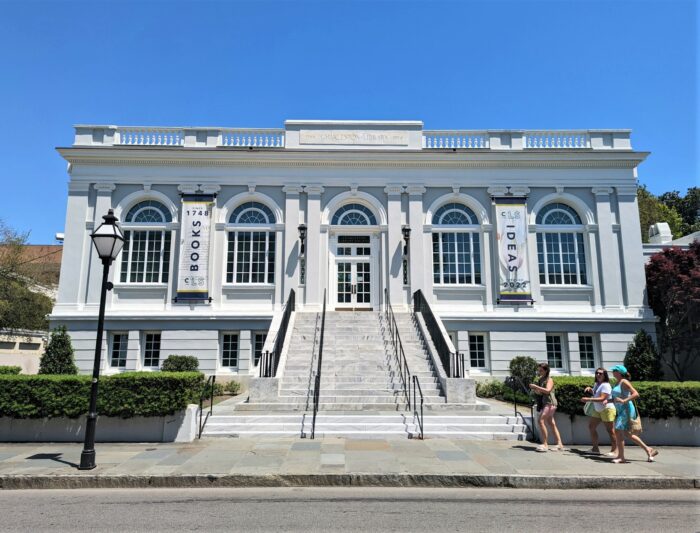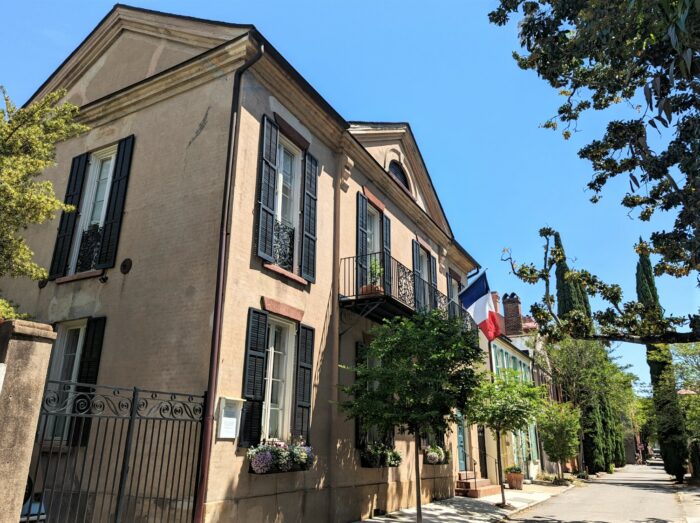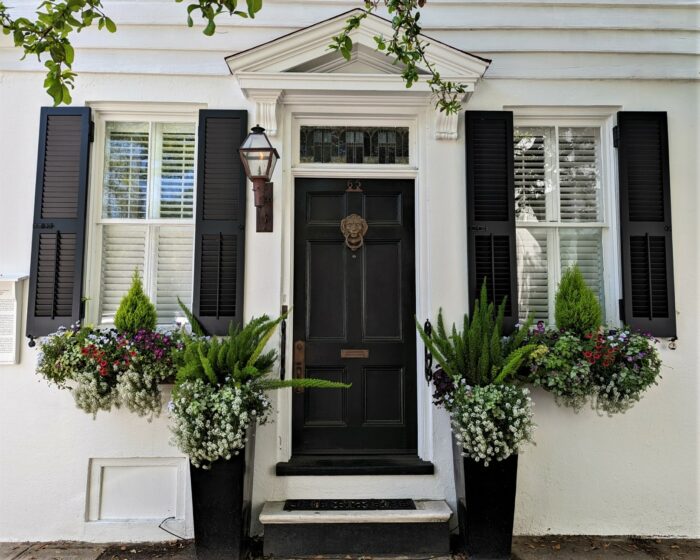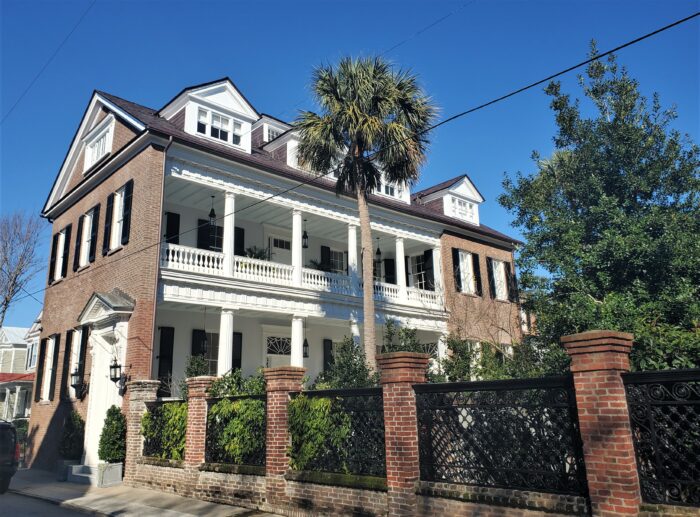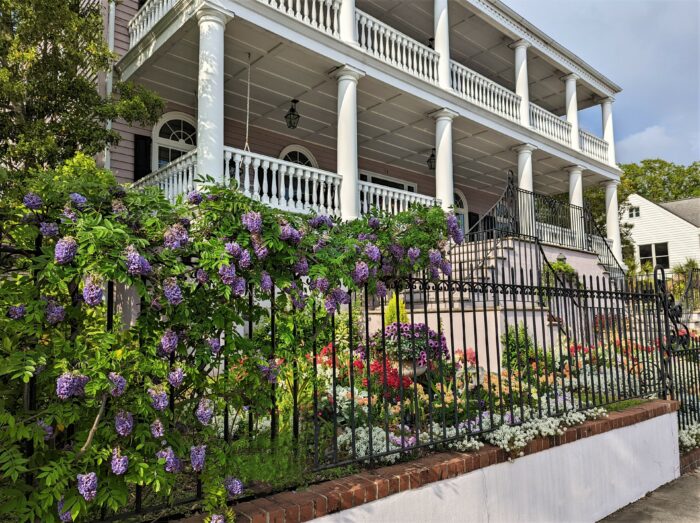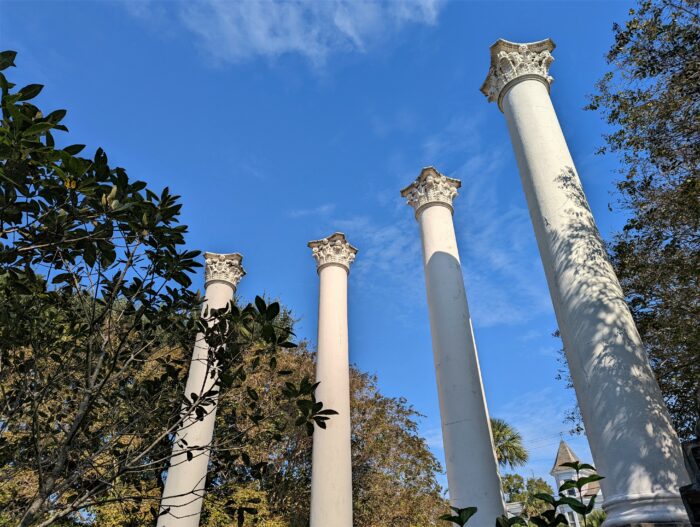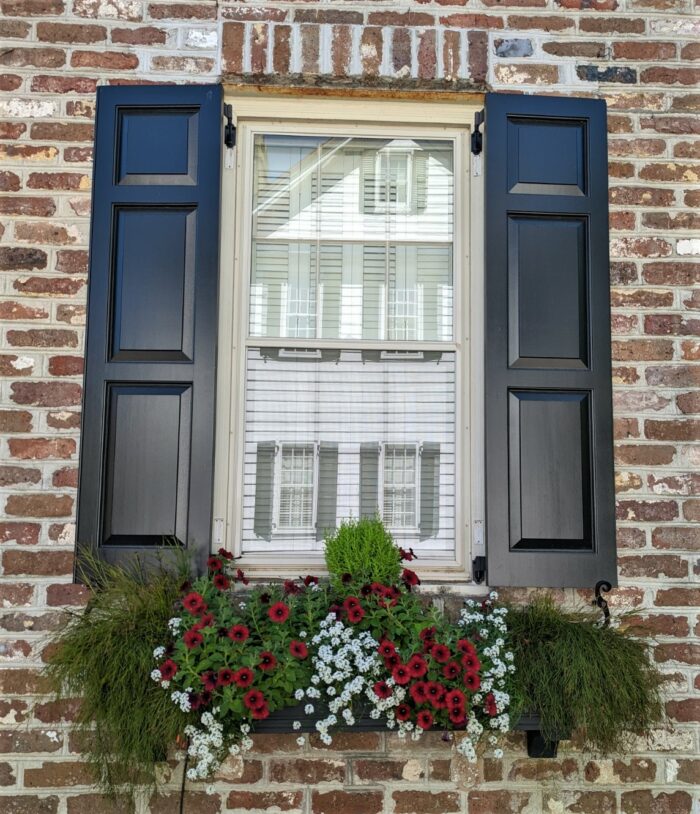This classic Charleston view can be found at the corner of South Battery and East Battery (it is not East Bay Street at this point).
USS Hobson
This obelisk/sundial can be found in the southwest corner of White Point Garden. It commemorates one of the worst naval disasters in US history — the collision of the USS Hobson (a destroyer) with the much larger USS Wasp (an aircraft carrier) The Hobson was essential cut in two — killing 176 sailors. The Charleston connection is that the Hobson, was built in the North Charleston Naval Yard and had also been based in Charleston. The stones around the monument were brought in from the 38 home states of the men who died.
Hydrangeas
Some pretty Charleston hydrangeas. Did you know hydrangeas can be both evergreen and deciduous? The deciduous variety is, however, the more commonly cultivated variety.
Library Society
The handsome home of the Charleston Library Society was built on King Street in 1914, but the organization was founded far earlier. Now 273 year old, it was founded in 1748 and is the second oldest circulating library in the United States and the oldest cultural institution in the South.
Viva La France
A little bit of France on St. Michael’s Alley — which can be found just south of Broad Street in the Charlestowne neighborhood.
On Meeting
This wonderful entry is across Meeting Street from The South Carolina Society Hall, which was was built in 1804 as the home for a club that was founded in 1737 as “The Two Bit Club.” It later became the “South Carolina Society,” and its home was eponymously named.
Masked
This handsome house on Limehouse Street, built circa 1859, has a “masked” piazza — where the brick of the house extends past the actual house and shields the piazza from the street.
Bloomin’
This house on Murray Boulevard always has a wonderful floral display.
Charleston Museum
This is all that remains of the “old” Charleston Museum in Cannon Park. Fortunately, the contents were moved to the museum’s new location before it was consumed by fire. As it did in the old museum, the skeleton of a 40’4″ right whale hangs in the entry. In 1880, the whale had the misfortune of entering Charleston harbor where it was pursued and ultimately captured and brought ashore.
Reflecting
A cool window box and reflection on Atlantic Street.
